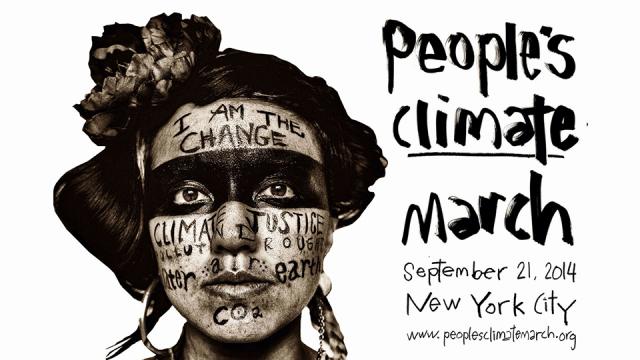
Thousands of people will take to New York City’s streets on Sept. 21 for the People’s Climate March, in what organizers hope will be the biggest ever mobilization for climate justice and a wake-up call for world leaders.
The climate march, sponsored by 1,000 diverse groups, is a good start — if it galvanizes national environmental organizations and foundations to ramp up their support, fundraising and organizing power for desperate grass-roots movements on the climate front lines.
A new study by the World Meteorological Organization released on Sept. 9 made the stakes clear: The record-setting growth rate of CO2 levels requires urgent action. As five years of Barack Obama’s “all of the above” energy policy — spewing out record oil drilling, fracking and shifting coal production toward exports — illustrates, government regulations have failed to halt the extreme energy extraction policies that are having what the Intergovernmental Panel on Climate Change (IPCC) calls “severe, pervasive and irreversible impacts for people and ecosystems.”
The only way to keep the vast majority of carbon-emitting fuel resources in the ground, as the latest draft by the IPCC warns, is to halt extraction. And that requires sustained direct action, endless legal strategies and even electoral challenges in largely ignored rural areas of our country against coal mines, fracking fields, tar sand pits and oil rigs. Only action that strikes at the root of the problem will succeed.
That’s why I’m hoping the march — organized by the indefatigable environmental activist Bill McKibben, long a supporter of hard deeds over hollow talk — does more than apply pressure to world leaders with nonbinding demands and big-city parades. His call for “a loud movement, one that gives our ‘leaders’ permission to actually lead and then scares them into doing so,” must shift into a national plan of action to take the climate justice fight to the extraction hot spots, from Appalachia to Alaska, from the heartland to the coastal rigs and export terminals that are now carrying our CO2 burden to other countries.
This requires a fundamental shift in the direction of national environmental organizations and their major funders to line up behind grass-roots leaders and direct action groups in their communities — not simply invite them to speak briefly onstage. National environmental organizations such as 350.org, Sierra Club and the Natural Resources Defense Council, with their access to big funders and social entrepreneurs, must provide massive amounts of funding and organizers to back urgent, local grass-roots action on the climate front lines.
Take my family’s home state of Illinois. Despite the fact that Illinois is in the throes of an unprecedented coal mining rush — a 60 percent increase in production in the last five years, with a fivefold increase in coal exports en route to CO2-spewing plants abroad — there are no locally based organizers from mainstream environmental groups in southern Illinois’ coal mining communities to take on deep-pocketed multinational corporations like Peabody and Foresight as well as weak-kneed government regulators.
Even worse, as Bloomberg recently pointed out, the Environmental Protection Agency’s proposed carbon rules will further push coal production in the cheaper Illinois Basin in competition with other energy markets. These missteps continue virtually unchallenged, except by besieged residents and volunteers without financial support or any green jobs program in sight.
With a fracking boom in Illinois soon to be unleashed by the recent passing of flawed regulations, the heartland and its Mississippi River corridor should serve as a cautionary tale for the U.S. and world leaders who will soon sit around a conference table with United Nations Secretary General Ban Ki-moon.
They should also learn from fellow leaders who are enacting crucial clean energy and environmental policies abroad, such as the regenerative cities movement in Europe that has broken the stranglehold of huge private utilities and led a shift toward renewable and decentralized sources of energy.
Similarly, the climate marchers should recognize their debt to communities in extraction-heavy states, which have paid a huge health and human toll for the country’s dirty energy production for more than a century, and push for regeneration funds to help those communities transition toward clean energy alternatives and build new alliances.
On Sept. 21, I will be cheering the marchers from the hollers of Rocky Branch in southern Illinois, with a small group of elderly farmers who are fending off a strip mine by Peabody Energy, the world’s largest privately owned coal company.
As my family and friends in Rocky Branch understand, with coal mining blasting set to destroy their farms — and our planet’s climate — we no longer have a “period of grace,” as eco-pioneer Barry Commoner warned us in 1970, “to save the environment from the final effects of the violence we have already done to it.”
Jeff Biggers is the author of “Reckoning at Eagle Creek: The Secret Legacy of Coal in the Heartland,” among other books.
3 WAYS TO SHOW YOUR SUPPORT
- Log in to post comments














